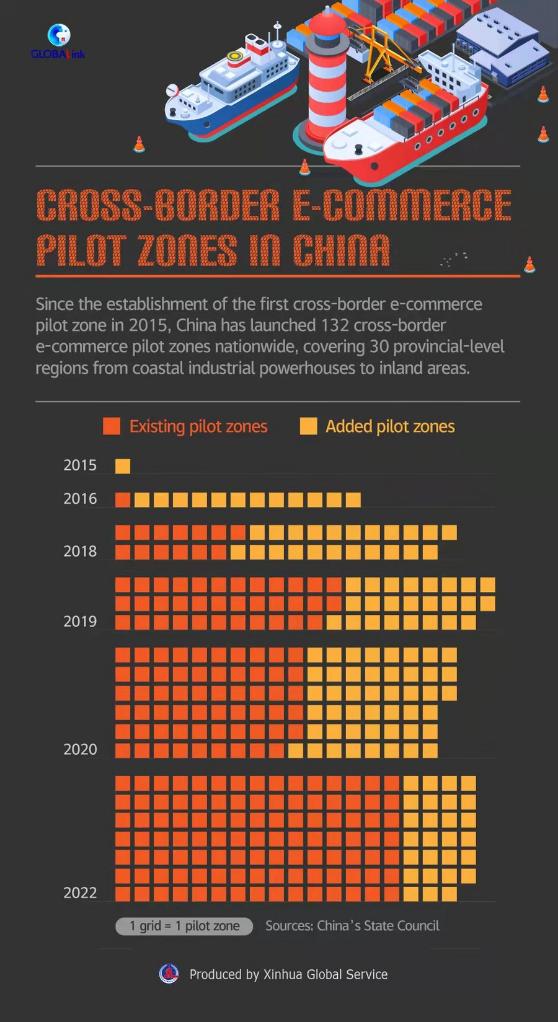
BEIJING, Feb. 15 (Xinhua) -- Cross-border e-commerce is gaining momentum in China against the backdrop of the COVID-19 pandemic that severely impacted international trade, and the recent approval of more cross-border e-commerce comprehensive pilot zones has, undoubtedly, accelerated this trend.
Last week, China's State Council issued a statement, approving the establishment of more cross-border e-commerce pilot zones in 27 cities and regions, including Erdos in Inner Mongolia and Yangzhou City in Jiangsu Province.
This now brings the overall tally of pilot zones to 132, covering almost all provincial-level regions in China from coastal industrial powerhouses such as Jiangsu, Zhejiang and Guangdong to inland areas.
"As a new form of foreign trade with great potential, cross-border e-commerce is still on its fast growth track," the Ministry of Commerce said.
Cross-border e-commerce, featuring online marketing, online transactions and contactless payment, has boomed in China over the past few years, particularly during the last two years when the pandemic impeded business travel and face-to-face contact.
According to official data, cross-border e-commerce volume soared tenfold over the past five years.
In 2021 alone, China's cross-border e-commerce imports and exports climbed 15 percent year on year to 1.98 trillion yuan (about 311 billion U.S. dollars), with related pilot zones playing a significant role in spurring the growth.
China began setting up cross-border e-commerce pilot zones as early as 2015 in Hangzhou, Zhejiang Province, in a bid to trial the new business form and digitalize its trade channels.
In these pilot zones, local governments provide a variety of trade services ranging from logistics, payment, law, taxation and customs clearance to facilitate enterprises' cross-border e-commerce businesses.
"Our company has seen tangible benefits after the establishment of cross-border e-commerce pilot zones," said Wu Fan, head of the Asia-Pacific region of U-Play Corporation, an Anhui-based hygiene products manufacturer.
Currently, 90 percent of the company's products are sold overseas via cross-border e-commerce retail. The company's cross-border imports and exports soared 62.5 percent from 80 million yuan in 2020 to 130 million yuan in 2021, Wu said, attributing this growth to preferential tax policies.
The favorable policy environment for cross-border e-commerce has led to a continuous increase in the number of cross-border e-commerce companies.
So far, China has seen the establishment of more than 30,000 enterprises related to cross-border e-commerce, with the volume climbing every year.
Apart from benefitting market entities, cross-border e-commerce pilot zones also improve the shopping experience of consumers, said Xu Qing, director of public affairs department at Tmall Global, a leading online shopping platform where Chinese consumers hunt for overseas products.
"Thanks to the cross-border e-commerce boom, domestic consumers can choose from more overseas products with lower prices and faster delivery without leaving their homes," Xu said.
As one of the world's largest goods traders, China is expected to further enhance its competitive strengths in foreign trade through the expansion of cross-border e-commerce pilot zones.
Zhu Caihua, a professor at the University of International Business and Economics, said cities later designated as cross-border e-commerce pilot zones should leverage local development advantages and enhance institutional innovation to propel high-quality development of the new business form. ■












